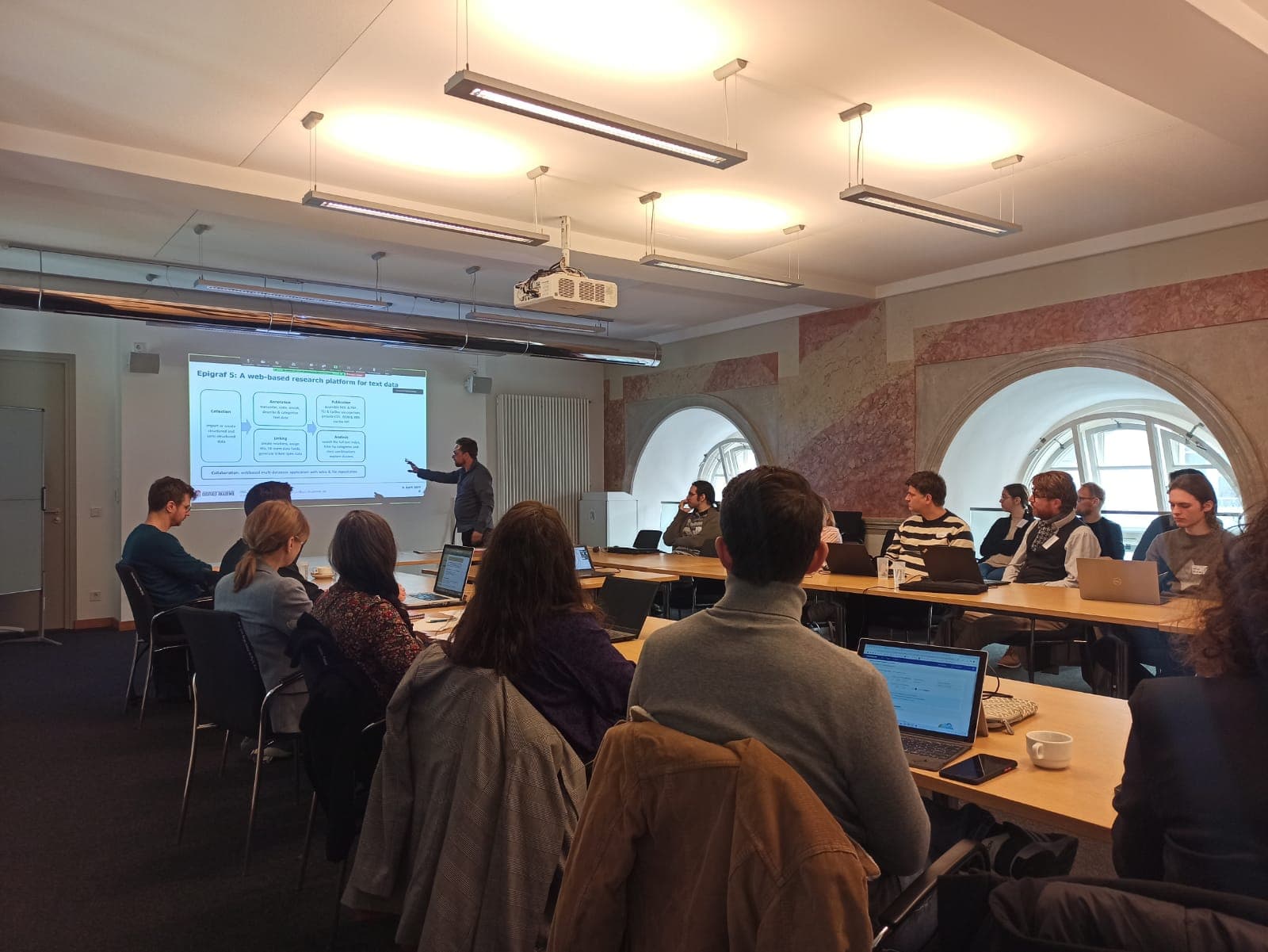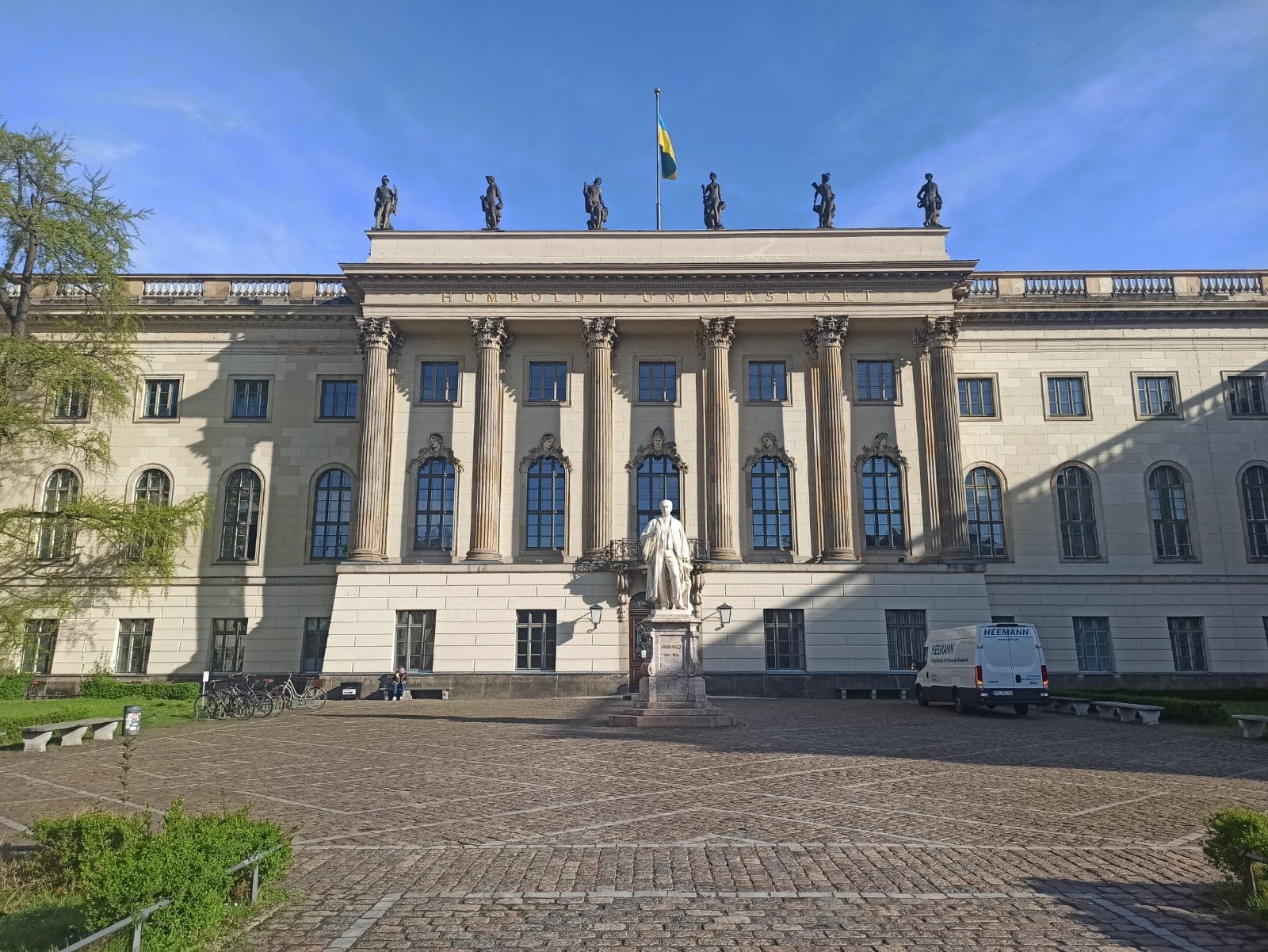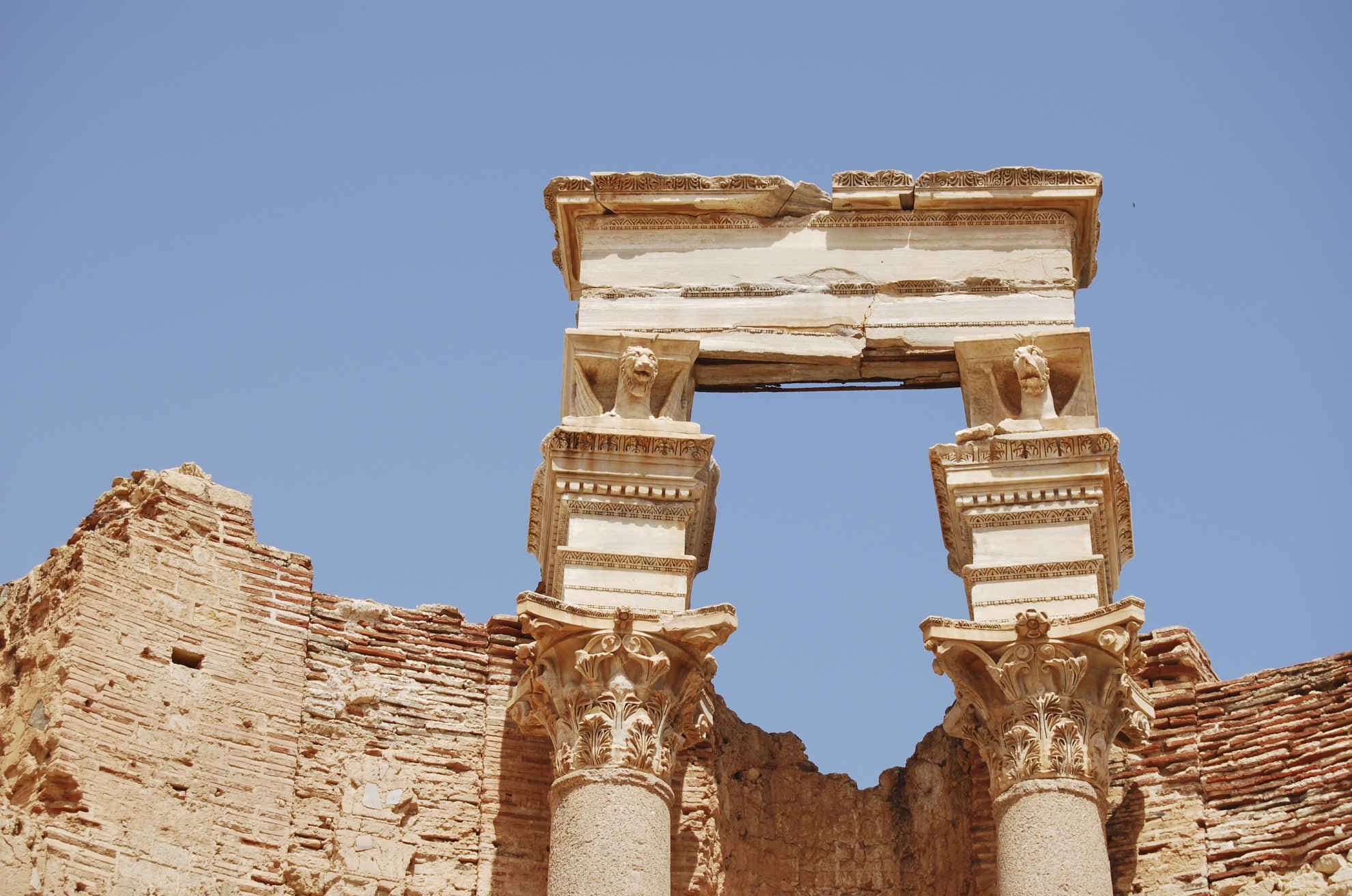In recent days, Marina and Lorena from our team participated in the 8th Epigraphy.info Workshop in Berlin, which this year focused on the presentation of new and ongoing projects in the field of digital epigraphy. The Berlin workshop provided us with an excellent opportunity to showcase the progress of our work in the STONE MASTERS project.
Members of our team presented a poster describing the DAWE project - a digital database developed as part of the ERC STONE-MASTERS project. The aim of this project is to gather information about late antique stonemasons and artisans, recognizing them as key participants in cultural exchange, and to examine the significance of their inscriptions as carriers of memory.
To illustrate the full potential of DAWE, Marina and Lorena presented the results of our team's recent research on inscriptions from Zoara. This site is known to epigraphers as the location where hundreds of Greek and Aramaic inscriptions dating from Late Antiquity (4th-7th centuries) have been found, including spectacular finds of colorfully painted epitaphs. Research on this collection consisted of several stages. Initially, we created chronologically related groups of inscriptions, followed by morphological, iconographic, paleographic analysis (which involved meticulous identification of individual letters as characteristic signs used by stonemasons), and textual analysis. Especially the paleographic analysis revealed the need for the production of so-called controlled vocabulary in paleography, and we developed the first standards for standardized description.
We hypothesized that deductive analysis of these elements would allow us to identify relationships between selected inscriptions and thus help us identify style, then workshop, and finally, the chosen stonemason. Thanks to the conducted research, we managed not only to refine the methodology for identifying workshops but also to recognize some stonemasons. During their presentation, Marina and Lorena presented the results of research on one of them, showcasing selected inscriptions from the same workshop provisionally named the "Sun disk workshop." Lorena and Marina also outlined perspectives for further work on identifying stonemason workshops. Currently, key questions for us include: whether there was more than one workshop in the city at the same time, whether one workshop/stonemason offered inscriptions made in more than one style, and how selected styles were disseminated in the area and among the stonemason workshops themselves. The epigraphic material from Zoara has proven to have tremendous potential. Therefore, we anticipate further findings in the near future!
More information about the workshop, as well as all the abstracts under this link.
Photos from the conference


